Were you searching for a List of iPhones in order? This article is for you as we have prepared a complete list of iPhones in order.
If you have an iPhone, you might be aware that it does not ask you to get nonsense apps that can clutter your screen.
Most people in the world prefer to use Android phones as they provide diverse hardware and software customization options.
As far as the iPhone is concerned, it comes with a sleek design and is very fast when it comes to browsing speed.
The best part about using an iPhone is that it provides a better browsing experience on your phone than on Android devices.
Mobile phone manufacturers that use Android provide a lot of bloatware in their devices, which takes much storage space. But with an iPhone, you will not find software preloaded on it; therefore, it will provide you with a clean experience.
You should have an iPhone if you always want to avail yourself of the latest version of OS on your smartphone.
Apple mainly highlights the simplicity in the iPhone, which might be why its users can’t replace the batteries on their iPhones; however, the batteries can be replaced, but the same has to be done by a skilled person.
The cheapest phone that Apple offers is iPhone SE which is priced at $349. Therefore, it is obvious to all that it can be owned by only those who have got some money to spend on their phones.
Apple is not only restricted to smartphones but also manufactures computers, tablets, and watches.
List of iPhones
This article has mentioned all the iPhone models since their launch (i.e., from 2007 to 2023). So without any further ado, let us look at the specifications of the below-mentioned iPhone models.
1. iPhone
Launch Date: Jan 9, 2007
The first-ever iPhone was unveiled by Steve Jobs at the Macworld conference on January 9, 2007. Despite its early announcement, its official sale started late in June.
The model was priced at $499 for a 4GB model and $599 for an 8GB model (with a two-year contract with AT&T). It measured 3.5 in. diagonally, played the video, and included a 2-megapixel camera.
Also, it came with an ability to sync up with a user’s iTunes, plus mail, notes, and bookmarks.
Specifications:
- Camera: Rear- 1.9 megapixels
- RAM: 128 MB
- Storage: 4/8/16 GB
- Battery: 1400 mA
- Processor: S5L8900
2. iPhone 3G
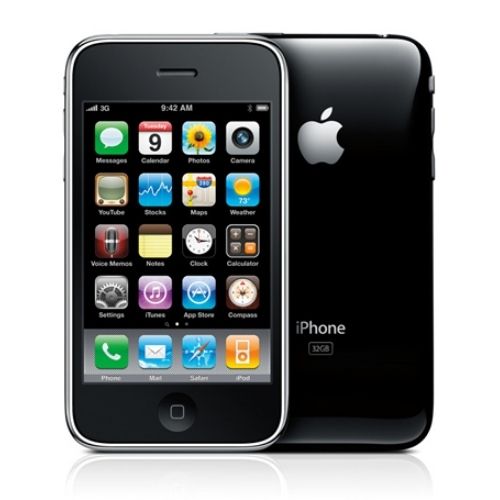
Launch Date: June 9, 2008
Apple launched iPhone 3G after a year of success with the first iPhone. The same year where Apple launched the iOS App Store and replaced Mac with MobileMe.
It was very similar in terms of the design of the iPhone and came with the same buttons and ports as before.
iPhone 3G was among the first smartphones to bring GPS to a device and that made apps like Google Maps more appropriate.
Specifications:
- Camera: Rear- 1.9 megapixels
- RAM: 128 MB
- Storage: 8/16 GB
- Battery: 1150 mA
- Processor: S5L8900
3. iPhone 3GS
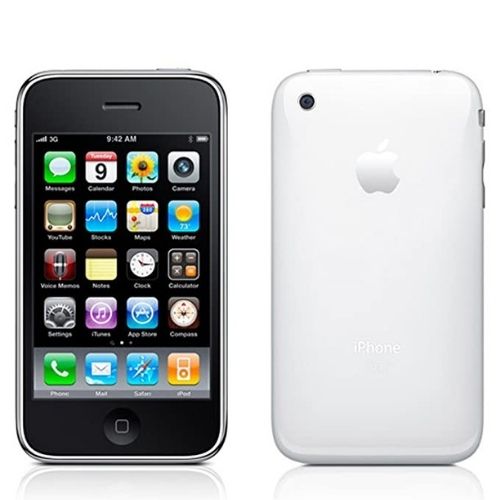
Launch Date: June 19, 2009
The iPhone 3GS was the second “generation” but the third iPhone released by Apple.
The screen size of this device was kept the same as the last two iPhones and that an addition of oleophobic coating was made to help it resist fingerprints and other oils.
It was also the first iPhone model to use Voice Control- a fundamental precursor to Siri.
Other upgrades included faster processing speeds, the ability to record video using the 3MP rear camera, and a built-in compass.
Specifications:
- Camera: Rear- 3.1 megapixels
- RAM: 256 MB
- Storage: 8/16/32 GB
- Battery: 1219 mA
- Processor: S5L8920
4. iPhone 4
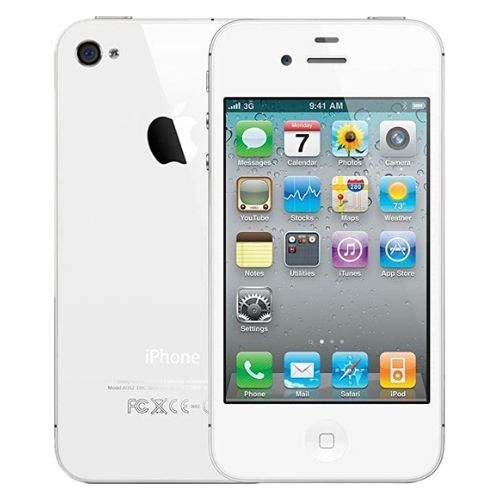
Launch Date: June 24, 2010
Apple made significant improvements to the display for the time with the launch of the iPhone 4.
For this model, it went with optical lamination and an in-plane switching panel with a light-emitting diode backlight.
It was the thinnest smartphone in the world back then in 2010. Apple also added dual mics for better noise quality and even touted a front camera, VGA resolution to this model.
Specifications:
- Camera: Front- 0.3 megapixels | Rear- 5.0 megapixels
- RAM: 512 MB
- Storage: 8/16/32 GB
- Battery: 1419 mA
- Processor: S5L8930 A4
5. iPhone 4S
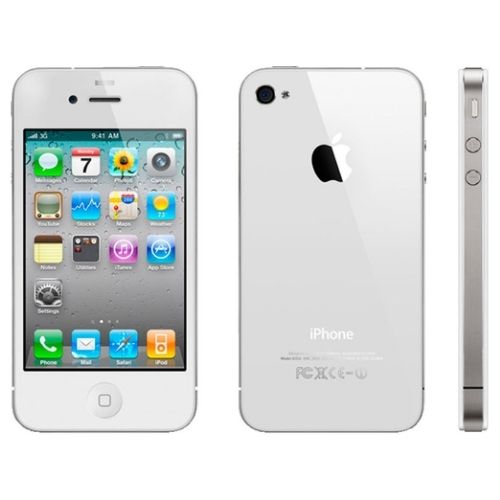
Launch Date: October 14, 2011
Apple added a bunch of new features to the iPhone 4S including AirPlay mirroring that allowed users project their interface directly to the Apple TV and Siri that came with a full-on virtual digital assistant feature and a Pixar-like personality.
It was the first iPhone ever to record 1080p video with its rear camera. Apple even went on to announce that they’d already sold about 4-million phones by October 17.
Specifications:
- Camera: Front- 0.3 MP | Rear- 8.0 MP
- RAM: 512 MB
- Storage: 8/16/32/64 GB
- Battery: 1432 mA
- Processor: S5L8940 A5
6. iPhone 5
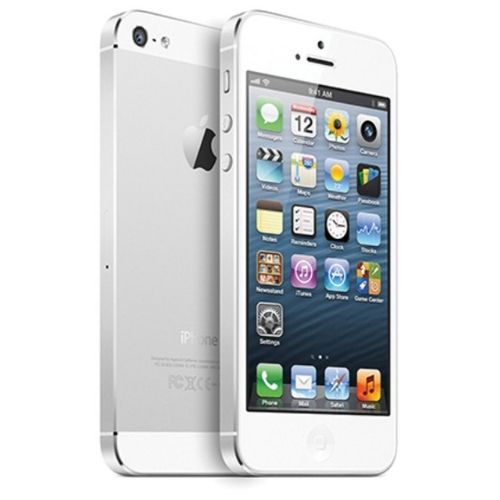
Launch Date: September 21, 2012
iPhone 5 came with a major redesign and went from a 3:2 to a more cinematic 16:9 aspect ratio.
It was the first iPhone to support 4G LTE, something that changed the entire mobile broadband in the era.
A 3rd mic was added to the model for better noise cancellation and on the other hand, was even claimed to equip a 5-element lens for greater sharpness.
Specifications:
- Camera: Front- 1.2 megapixels | Rear- 8.0 megapixels
- RAM: 1 GB
- Storage: 16/32/64 GB
- Battery: 1434 mA
- Processor: S5L8950 A6
7. iPhone 5c
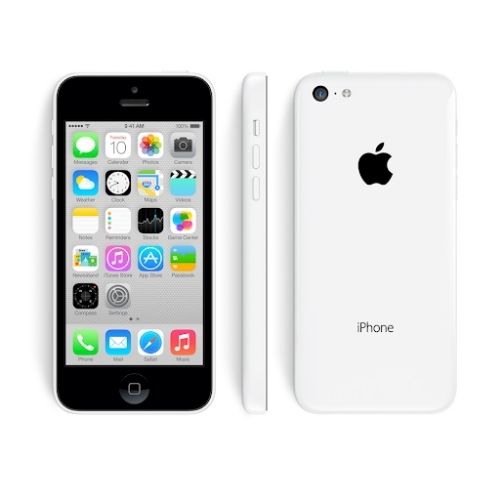
Launch Date: September 20, 2013
iPhone 5c was essentially a colorful device that made a switch to a range of colorful polycarbonate shells and was offered at a much lower cost compared to earlier models.
Other upgrades included an improved front-facing FaceTime camera and support for more wireless LTE bands.
It was among the top three best-selling phones in the US for about a period of three months.
Specifications:
- Camera: Front- 1.2 megapixels | Rear- 8.0 megapixels
- RAM: 1 GB
- Storage: 16/32/64 GB
- Battery: 1508 mA
- Processor: S5L8950 A6
8. iPhone 5s
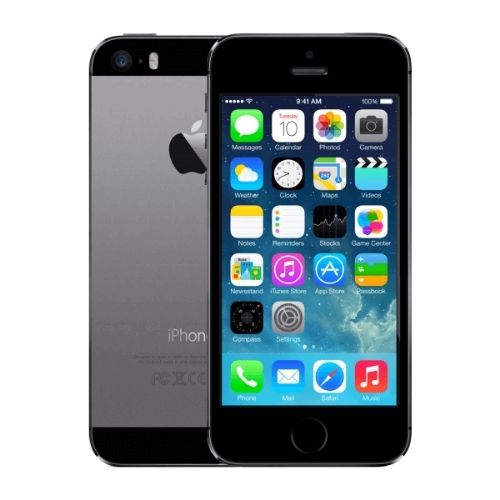
Launch Date: September 20, 2013
iPhone 5s, a premium model from Apple, was the only smartphone in the world with a 64-bit system.
It came with the support of OpenGL ES 3.0 for graphics that allowed users to experience a much-detailed skin texture and shadows while gaming.
It was the first-ever iPhone to replace the home button with a fingerprint sensor. It was retailed for $199 for 16 GB, $299 for 32 GB and $399 for 64 GB.
Specifications:
- Camera: Front- 1.2 megapixels | Rear- 8.0 megapixels
- RAM: 1 GB
- Storage: 16/32/64 GB
- Battery: 1508 mA
- Processor: S5L8960 A7
9. iPhone 6
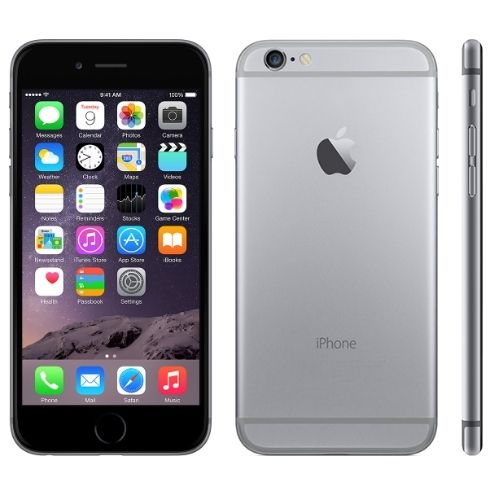
Launch Date: September 19, 2014
With the release of the iPhone 6, Apple went on to a whole new iPad-style design along with larger screens.
It offered faster processors, better cameras, and NFC for the Apple Pay payment system.
The device measured at 6.9mm and was priced at $199 on a contract or $649 without a contract.
The front-facing camera was also upgraded, with an f/2.2 aperture offering new burst mode capabilities.
Specifications:
- Camera: Front: 1.2 megapixels | Rear: 8.0 megapixels
- RAM: 1 GB
- Storage: 16/64/128 GB
- Battery: 1809 mA
- Processor: T7000 A8
10. iPhone 6 Plus
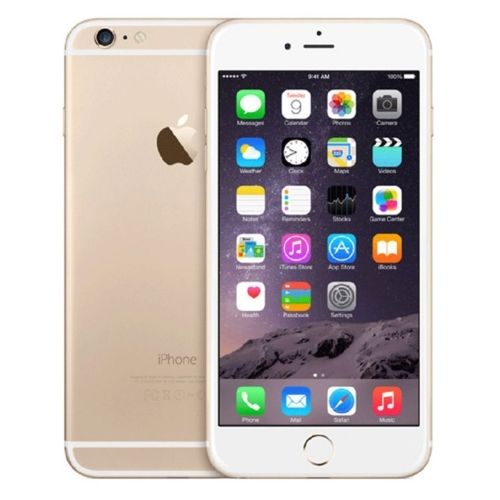
Launch Date: September 19, 2014
iPhone 6 Plus included the same general design as iPhone 6 with only a slight difference in size.
It had three major differentiating factors- optical image stabilization for the camera, and longer battery life, and an iPad-style landscape mode.
Also, major camera advancements were made into this model in form of sensor upgrades, improved tone mapping, better noise reduction, and new Focus Pixel technology.
Specifications:
- Camera: Front: 1.2 megapixels | Rear: 8.0 megapixels
- RAM: 1 GB
- Storage: 16/64/128 GB
- Battery: 2906 mA
- Processor: T7000 A8
11. iPhone 6s
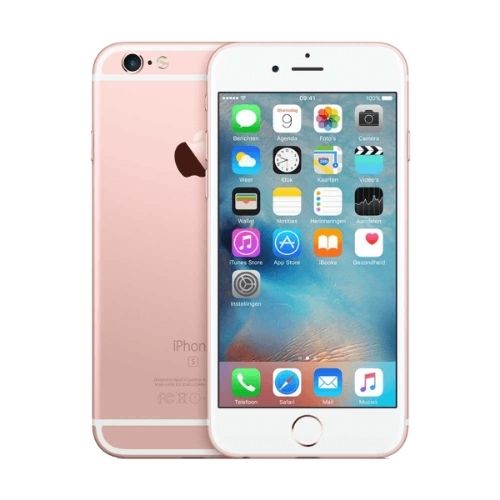
Launch Date: September 25, 2015
Everything from the camera to the processor was changed with Apple’s new S releases.
The device was constructed from completely new material and new core technologies were introduced into this model.
It was 70% faster at CPU tasks and 90% faster at GPU tasks than the A8 processor in the previous iPhone models.
It even enabled a range of new shortcut gestures Apple’s calling the “Peek” and “Pop.”
Specifications:
- Camera: Front- 5 megapixels | Rear- 12.2 megapixels
- RAM: 2 GB
- Storage: 16/64/128 GB
- Battery: 1715 mA
- Processor: S8000 A9
12. iPhone 6s Plus
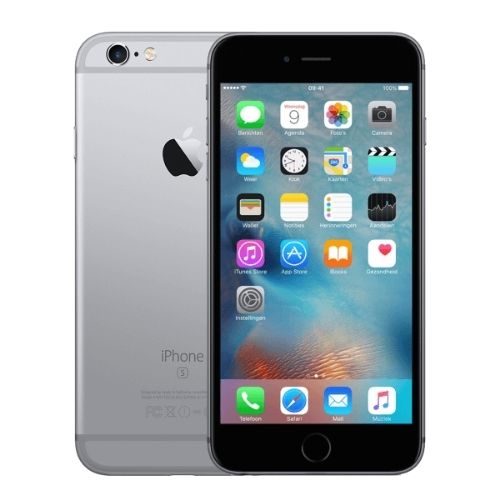
Launch Date: October 16, 2015
Similar in design to the iPhone 6s, iPhone 6s Plus came with more advanced features including Optical Image Stabilization which was previously not seen in any iPhone models.
It touted a 5-megapixel front-facing FaceTime camera with a True Tone Retina Flash feature which was meant to light up the display of the iPhone before capturing a photo.
Specifications:
- Camera: Front: 5 megapixels | Rear: 12.2 megapixels
- RAM: 2 GB
- Storage: 16/64/128 GB
- Battery: 2750 mA
- Processor: S8003 A9
13. iPhone SE (1st Generation)
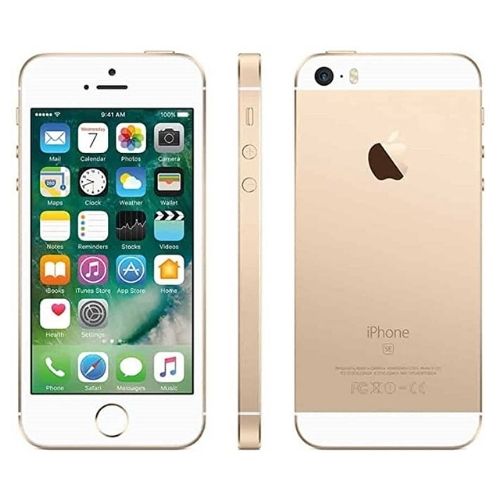
Launch Date: March 31, 2016
iPhone SE, a 4-inch smartphone offered a quite cheaper option to the company’s flagship iPhone 6S and 6S Plus.
Apple claimed it to be “the most powerful 4-inch smartphone ever.” It came embedded with an M9 motion coprocessor along with the 64-bit Apple A9 processor and allowed users to play games smoothly.
It was priced at $399 with 16GB of storage and $499 for 64GB of storage.
Specifications:
- Camera: Front- 1.2 megapixels | Rear- 12.2 megapixels
- RAM: 2 GB
- Storage: 16/32/64/128 GB
- Battery: 1624 mA
- Processor: S8003 A9
14. iPhone 7
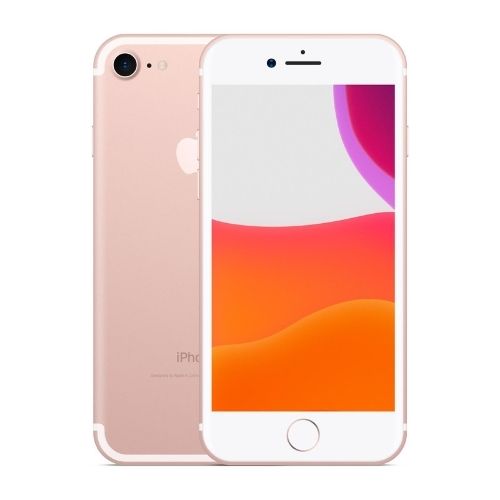
Launch Date: September 16, 2016
Continuing to feature the same screen sizes and dimensions, iPhone 7 came with several important internal modifications.
The model experienced minor design changes and was touted to be water and dust-resistant.
The physical Home button was replaced by a “solid-state” pressure-sensitive button. It was also the first among the series to remove the 3.5mm headphone jack.
Specifications:
- Camera: Front- 7 megapixels | Rear- 12.2 megapixels
- RAM: 2 GB
- Storage: 32/128/256 GB
- Battery: 1960 mA
- Processor: T8010 A10 Fusion
15. iPhone 7 Plus
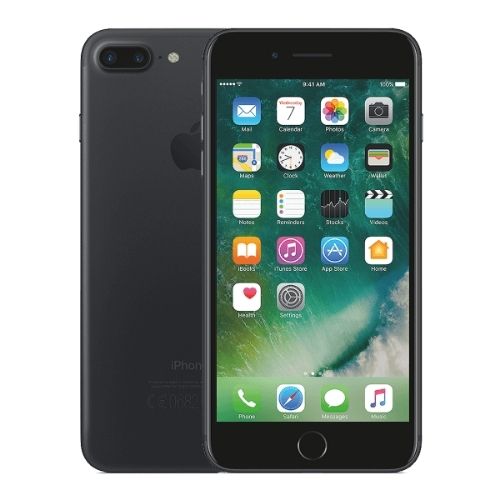
Launch Date: September 16, 2016
The iPhone 7 Plus didn’t look any different from the previous-generation iPhones and featured the same 4.7 and 5.5-inch screen sizes.
Equipped with an A10 Fusion processor, it was 40 percent faster than the processor in the iPhone 6s.
It even went on to feature two high-performance cores and two high-efficiency cores for better performance.
The device was the first ever to include a dual-lens camera in the lineup.
Specifications:
- Camera: Front- 7 megapixels | Rear- 2×12.2 megapixels
- RAM: 3 GB
- Storage: 32/128/256 GB
- Battery: 2900 mA
- Processor: T8010 A10 Fusion
16. iPhone 8
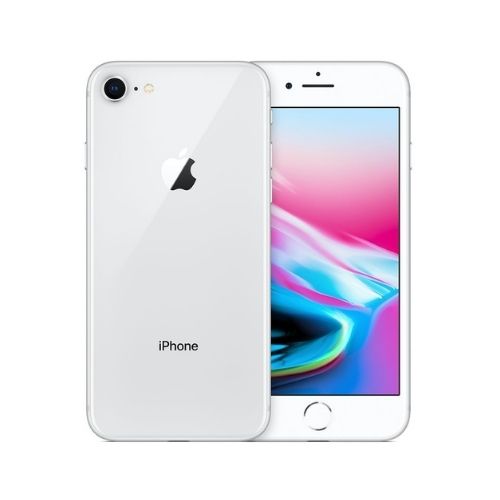
Launch Date: September 29, 2017
iPhone 8 came with a whole new adoption of glass bodies and continued to include the Touch ID Home button and thick bezels at the top and bottom of its display.
It included a 4.7-inch display and was upgraded with True Tone, 3D Touch, and P3 wide color support for a greater range of colors.
It even came with the ability to get charged when placed at the top of any Qi-certified inductive charger.
Specifications:
- Camera: Front: 7 megapixels | Rear: 12.2 megapixels
- RAM: 2 GB
- Storage: 64/256 GB
- Battery: 1821 mA
- Processor: T8015 A11 Bionic
17. iPhone 8 Plus
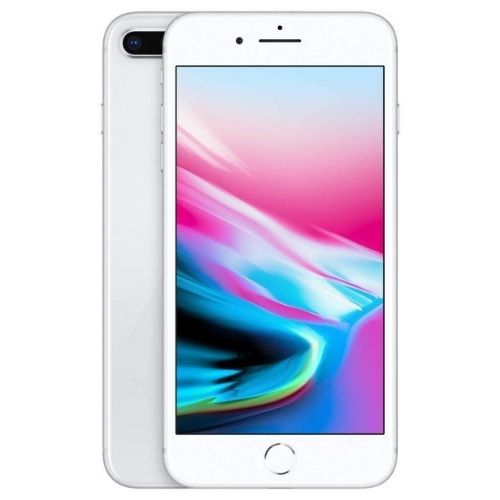
Launch Date: September 29, 2017
Launched alongside iPhone 8, iPhone 8 Plus came with a similar overall design as previous-generation devices.
It came with improved cameras and was equipped with better sensors as compared to previous models.
It also included an upgraded image signal processor built into the A11 that bought better low-light performance.
Specifications:
- Camera: Front- 7 megapixels | Rear- 2×12.2 megapixels
- RAM: 3 GB
- Storage: 64/256 GB
- Battery: 2691 mA
- Processor: T8015 A11 Bionic
18. iPhone X
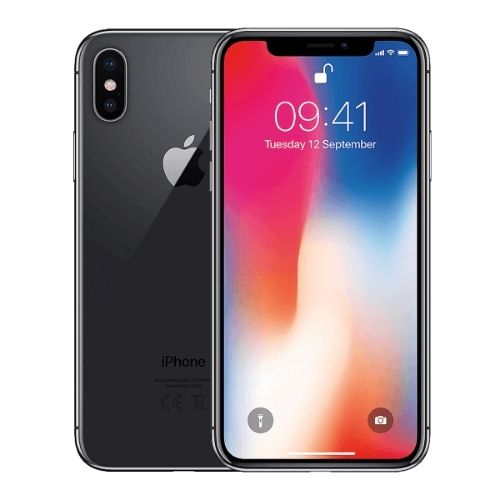
Launch Date: November 3, 2017
iPhone X bought a major design shift in the entire iPhone lineup. It held the camera and sensors right on the front of the phone at the top of the screen thereby eliminating all bezels on the display.
The glass body of the device was IP67 water and dust-resistant and even enabled support for inductive wireless charging.
Other upgraded features were a 5.8-inch OLED display, facial recognition, and 3D camera functionality, a glass body, and an A11 Bionic processor.
Specifications:
- Camera: Front- 7 megapixels | Rear- 2×12.2 megapixels
- RAM: 3 GB
- Storage: 64/256 GB
- Battery: 2716 mA
- Processor: T8015 A11 Bionic
19. iPhone XR
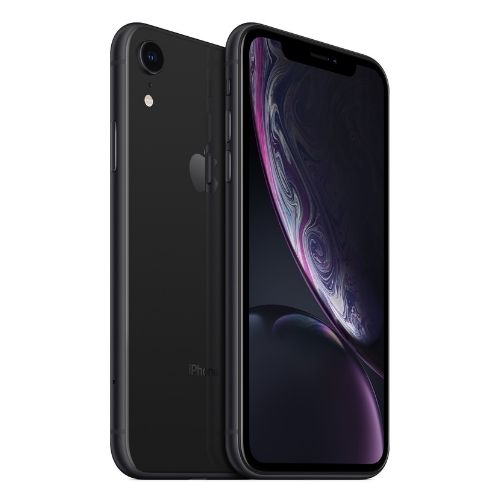
Launch Date: September 12, 2018
Launched on September 12, 2018, iPhone XR was more of a budget-friendly smartphone meant for consumers who don’t want Apple’s latest technology.
It featured a precision-machined 7000 Series aerospace-grade aluminum frame wrapped around an all-glass enclosure.
It included a new “Liquid Retina” display which Apple described as the most advanced LCD ever in a smartphone with support for 120Hz touch sensing.
Specifications:
- Camera: Front- 7 megapixels | Rear- 12.2 megapixels
- RAM: 3 GB
- Storage: 64/128/256 GB
- Battery: 2942 mA
- Processor: T8020 A12 Bionic
20. iPhone XS
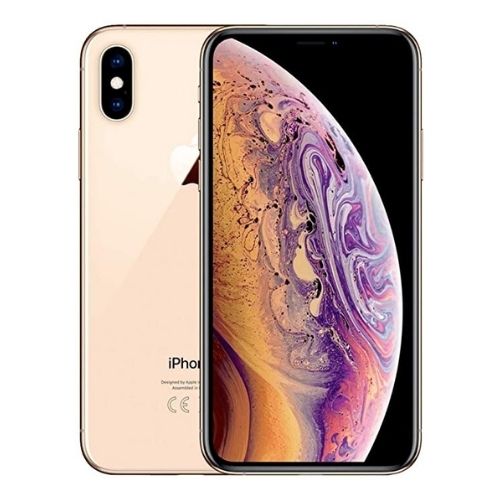
Launch Date: September 21, 2018
iPhone XX featured the sharpest OLED displays and highest pixel density with support for Dolby Vision, HDR 10, and Wide Color. It was housed with the most durable glass ever in a smartphone.
Other upgrades included support wireless charging, along with edge-to-edge displays and a TrueDepth Camera System for Face ID.
Specifications:
- Camera: Front- 7 megapixels | Rear- 2×12.2 megapixels
- RAM: 4 GB
- Storage: 64/256/512 GB
- Battery: 2658 mA
- Processor: T8020 A12 Bionic
21. iPhone XS Max
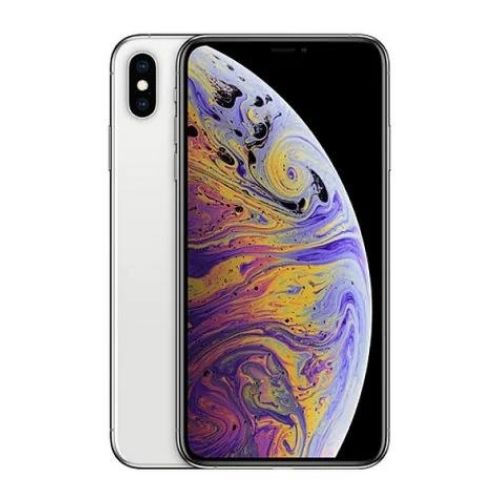
Launch Date: September 21, 2018
iPhone XS Max featuring the 6.5-inch iPhone is the largest display Apple has ever offered.
It came equipped with a 7-nanometer A12 Bionic chip and four efficiency cores.
Other upgrades were supported for Gigabit-class LTE with 4×4 MIMO, Bluetooth 5.0, and Dual-SIM options with an included nano-SIM and eSIM for using two phone numbers at once.
Specifications:
- Camera: Front- 7 megapixels | Rear- 2×12.2 megapixels
- RAM: 4 GB
- Storage: 64/256/512 GB
- Battery: 3174 mA
- Processor: T8020 A12 Bionic
22. iPhone 11
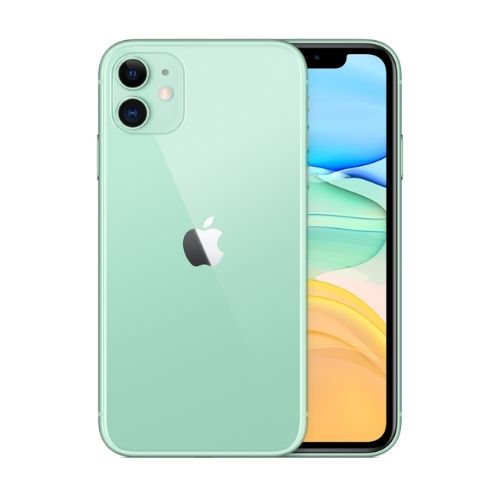
Launch Date: September 10, 2019
Unlike iPhone XR, the iPhone 11 came equipped with Haptic Touch (supported across iOS 13).
Apple claimed it to be made from the toughest glass ever in a smartphone and also offered improved water resistance.
The camera setup in the device featured a standard wide-angle camera and a new ultra-wide-angle camera, however, lacked the telephoto camera lens.
Specifications:
- Camera: Front- 12 MP | Rear- 12 MP
- RAM: 4 GB
- Storage: 64, 128 or 256 GB
- Battery: 3110 mAh
- Processor: T8030 A13 Bionic
23. iPhone 11 Pro
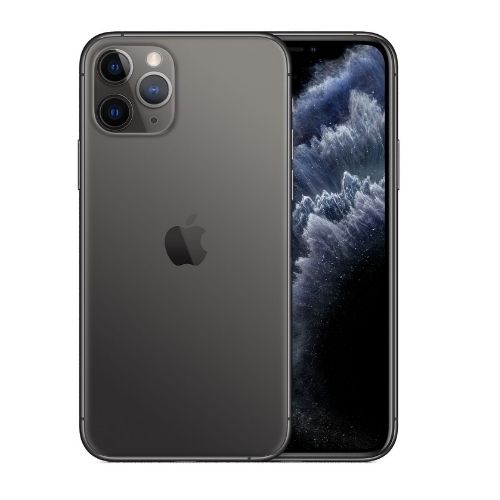
Launch Date: September 10, 2019
First, to get the “Pro” designation, iPhone 11 Pro outfitted the Haptic Touch feature and was available in textured matte finishes.
The camera interface on the iPhone 11 Pro was housed with a more immersive experience allowing users to capture the area outside of the frame using the ultra-wide-angle camera.
All the cameras of the device were made available to use for recording videos.
Launch Date: September 21, 2018
Specifications:
- Camera: Front- 12 MP | Rear- 12 MP, f/1.8, 26mm (wide), 12 MP, f/2.0, 52mm (telephoto), 12 MP, f/2.4, 13mm (ultrawide)
- RAM: 4 GB
- Storage: 64, 128 or 256 GB
- Battery: 3110 mAh
- Processor: T8030 A13 Bionic
24. iPhone 11 Pro Max
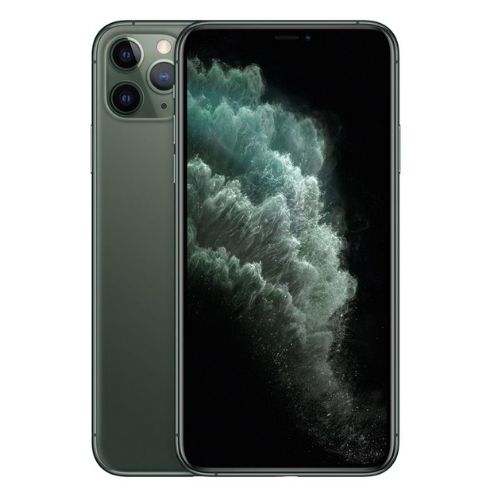
Launch Date: September 10, 2019
iPhone 11 Pro Max boasted a three-lens camera system on the back where the wide and telephoto lenses had optical image stabilization.
It came with an IP68 water-resistance rating and was certified to withhold a maximum depth of four meters.
The device received positive reviews for its performance and was considered to be an overall good phone.
Specifications:
- Camera: Front- 12 MP | Rear- 12 MP, f/1.8, 26mm (wide), 12 MP, f/2.0, 52mm (telephoto), 12 MP, f/2.4, 13mm (ultrawide)
- RAM: 4GB
- Storage: 64, 256 or 512 GB
- Battery: 3969 mAh
- Processor: T8030 A13 Bionic
25. iPhone SE (2020)
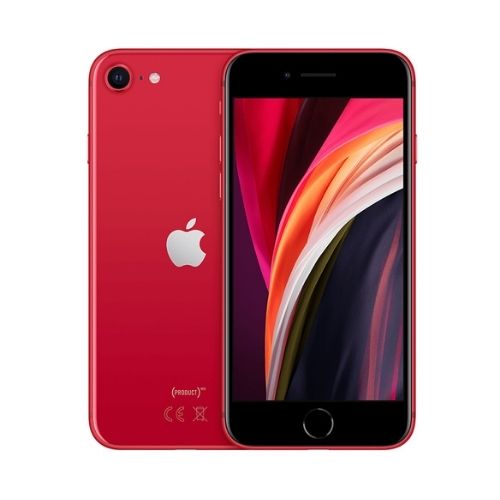
Launch Date: 15th April 2020
In 2020, Apple launched the iPhone SE, one of its most popular releases of all time.
It offered a compact design, a 4.7-inch Retina HD display, front home button paired with Touch ID.
The thick bezels were something that was related to the old iPhone models. It packed the same chart-topping A13 Bionic processor as the iPhone 11 Pro series.
Specifications:
- Camera: Front- 7 MP | Rear- 12 MP
- RAM: 3GB
- Storage: 64GB, 128GB and 256GB
- Battery: 1,821 mAh
- Processor: A13 Bionic
26. iPhone 12 mini
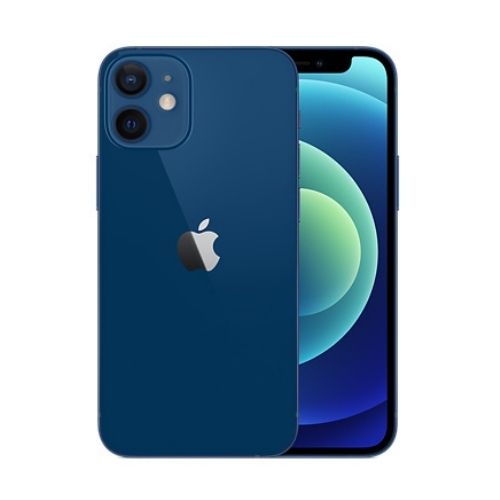
Launch Date: October 13, 2020
iPhone 12 mini changed the trends for larger screens and was offered as an alternative for smaller hands.
Its compact and lightweight design makes it perfect to carry.
With just two – wide-angle and ultra-wide-angle, and image processing software, this mini iPhone was appreciated for delivering stunning photographs.
Specifications:
- Display: 5.40-inch
- Resolution: 1080 x 2340 pixels
- Camera: Front – 12 MP | Rear- 12 MP + 12 MP
- Storage: 64GB, 128GB and 256GB
- Processor: A14 Bionic
- Colors: Black, White, Red, Green, Blue
- Video: 4K@24/30/60fps, 1080p@30/60/120fps, gyro-EIS
27. iPhone 12
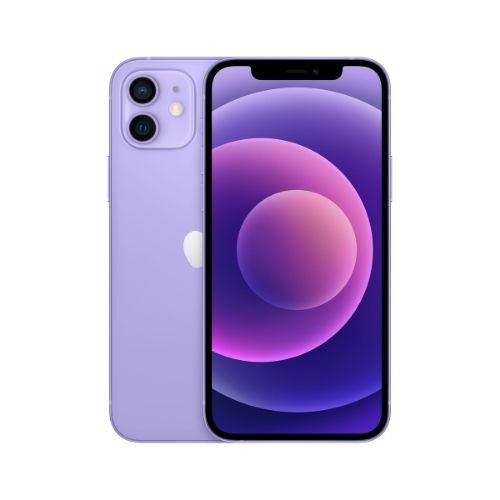
Launch Date: October 13, 2020
Launched on October 13, 2020, Apple introduced iPhone 12 with powerful features at an extremely affordable price tag.
Successor to the iPhone 11, this model featured Super Retina XDR OLED displays for the first time along with an edge-to-edge design. It was offered in a fun range of colors.
Specifications:
- Display: 6.1-inch
- Resolution: 1170×2532 pixels
- Camera: Front – 12 MP | Rear- 12 MP + 12 MP
- Storage: 64GB, 128GB and 256GB
- Processor: A14 Bionic
- Colors: Black, White, Red, Green, Blue
- Video: 4K@24/30/60fps, 1080p@30/60/120fps, gyro-EIS
28. iPhone 12 Pro
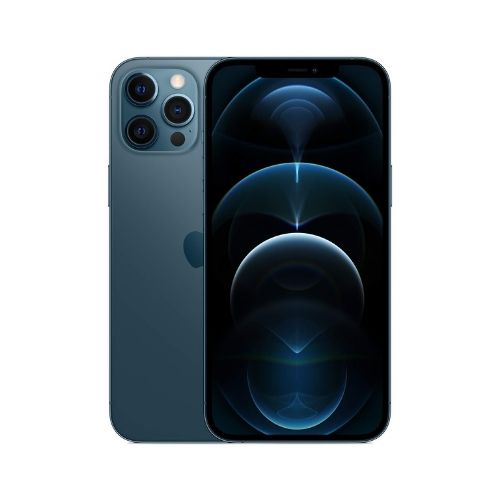
Launch Date: October 13, 2020
iPhone 12 Pro came with support for 5G connectivity to enable faster downloads and uploads, better quality video streaming, improved gaming, and higher-definition 1080p FaceTime calls (all this was made available for all iPhone 12 models).
The device was housed with abilities to deliver an advanced 5G experience on a global scale.
Specifications:
- Display: 6.1-inch
- Resolution: 1170 x 2532 pixels
- Camera: Front – 12 MP | Rear- 12 MP + 12 MP + 12MP
- Storage: 128GB, 256GB, 512GB
- Processor: A14 Bionic
- Colors: Silver, Graphite, Gold, Pacific Blue
- Video: 4K@24/30/60fps, 1080p@30/60/120fps, gyro-EIS
29. iPhone 12 Pro Max
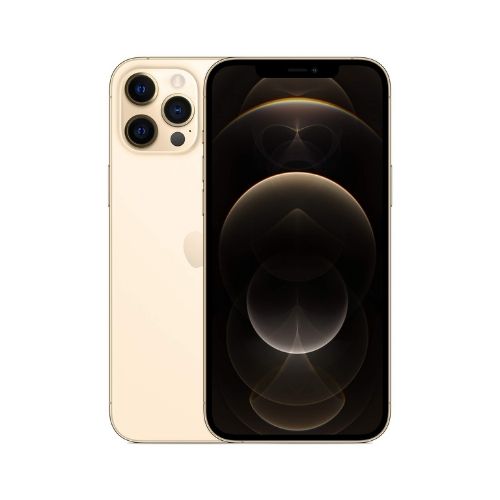
Launch Date: October 13, 2020
iPhone 12 Pro Max stands as the larger mode from all the four models in the lineup. It has a bigger 6.7-inch Super Retina XDR display compared to the iPhone 11 Pro Max.
Apple also ensured this model to have superior video quality, with the incorporation of support for 10-bit color depth imagery in HDR video.
It was shipped in four stainless steel finishes, including graphite, silver, gold, and pacific blue.
Specifications:
- Display: 6.7-inch
- Resolution: 1284 x 2778 pixels
- Camera: Front – 12 MP | Rear- 12 MP + 12 MP + 12 MP
- Storage: 128GB, 256GB, 512GB,
- Processor: A14 Bionic
- Colors: Silver, Graphite, Gold, Pacific Blue
- Video: 4K@24/30/60fps, 1080p@30/60/120fps, gyro-EIS
30. iPhone 13 mini

Launch Date: September 14, 2021
Being the entry-level iPhone for 2021, iPhone 13 mini could probably be the last ‘mini’ iPhone.
It comes with a 5.4-inch Super Retina XDR OLED screen with support for HDR10. As it is IP68-certified, it possesses the ability to withstand up to six meters underwater for 30 minutes.
Also, it features the new A15 Bionic system-on-chip, which makes this little phone a very powerful one.
Specifications:
- Display: 5.4-inch
- Resolution: 1080 x 2340 pixels
- Camera: Front – 12 MP | Rear- 12 MP + 12 MP
- Storage: 128GB, 256GB, 512GB
- Processor: A15 Bionic chip
- Colors: Pink, Blue, Midnight, Starlight, (PRODUCT)RED
- Video: 4K@24/30/60fps, 1080p@30/60/120fps/240fps, gyro-EIS
- Weight (g): 141.00
31. iPhone 13
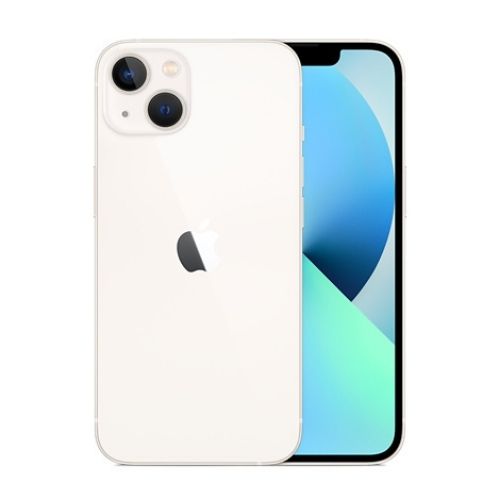
Launch Date: September 14, 2021
The iPhone 13 is a pleasing upgrade to the iPhone 12 family. It comes equipped with the same square-edged design as the iPhone 12 and 12 Mini, however with an upgrade ladder.
Here, the wide-angle camera hosts a larger sensor with sensor-based stabilization.
One decent addition to the phone was the Photographic Styles, which in order to suit your preferences can change the way your camera develops photos.
All in all, the iPhone 13 is the most reliable phone that will be in use for many coming years.
Specifications:
- Display: 6.1-inch
- Resolution: 1170 x 2532 pixels
- Camera: Front – 12 MP | Rear- 12 MP + 12 MP
- Storage: 128GB, 256GB, 512GB
- Processor: A15 Bionic chip
- Colors: Pink, Blue, Midnight, Starlight, (PRODUCT)RED
- Video: 4K@24/30/60fps, 1080p@30/60/120fps/240fps, gyro-EIS
- Weight (g): 174.00
32. iPhone 13 Pro
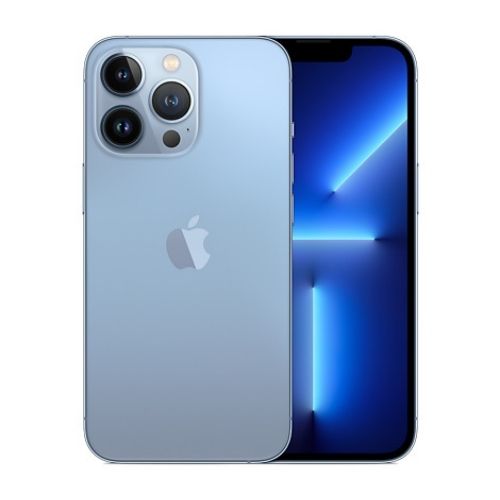
Launch Date: September 14, 2021
iPhone 13 Pro is the successor to the iPhone 12 Pro and is probably one of the most powerful phones ever made.
It equips a 6.1-inch LTPO AMOLED display which is ProMotion 120Hz-capable and boasts the A15 Bionic chip accompanied by 6GB of RAM.
Its 12MP f/1.5 main camera comes with a bigger sensor and 1.9µm effective whereas the 12MP 3x f/2.8 zoom camera and the autofocusing 13mm f/1.8 ultrawide equips outstanding macro capabilities.
If you have endless love for slender phones, then iPhone 13 Pro must be your ultimate choice.
Specifications:
- Display: 6.1-inch
- Refresh Rate: 120 Hz
- Resolution: 1170 x 2523 pixels
- Camera: Front – 12 MP | Rear- 12 MP + 12 MP +12 MP
- Storage: 128GB, 256GB, 512GB, 1TB
- Processor: A15 Bionic chip
- Colors: Graphite, Gold, Silver, Sierra Blue
- Video: 4K@24/30/60fps, 1080p@30/60/120fps/240fps, gyro-EIS
- Weight (g): 204.00
33. iPhone 13 Pro Max
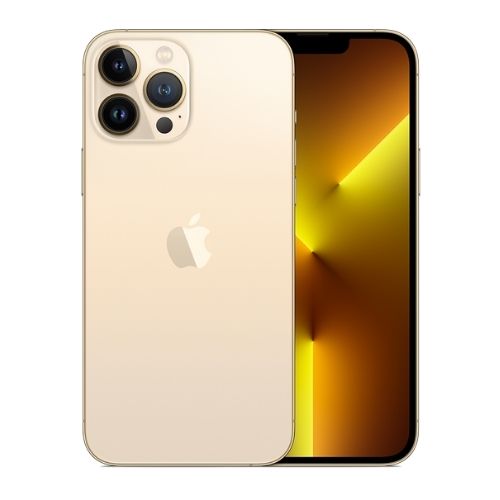
Launch Date: September 14, 2021
The iPhone 13 Pro Max practically offers everything that one would want in his phone – it packs the fastest performance of any handset, a 120Hz refresh rate display, and exceptional battery life.
The most-hyped upgrade to the iPhone 13 Pro Max’s display is the new ProMotion display.
The panel which is 6.7-inch long can scale its refresh rate from 10Hz to 120Hz dynamically — resulting in overall smooth performance.
Specifications:
- Display: 6.7-inch
- Refresh Rate: 120 Hz
- Resolution: 1284 x 2778 pixels
- Camera: Front – 12 MP | Rear- 12 MP + 12 MP +12 MP
- Storage: 128GB, 256GB, 512GB, 1TB
- Processor: A15 Bionic chip
- Colors: Graphite, Gold, Silver, Sierra Blue
- Video: 4K@24/30/60fps, 1080p@30/60/120fps/240fps, gyro-EIS
- Weight (g): 240.00
34. iPhone SE (3rd generation)

Key Specifications:
- Display: 4.7-inch Retina HD display
- Processor: A15 Bionic chip
- RAM: 3GB
- Storage: 64GB, 128GB, 256GB
- Rear Camera: 12MP
- Front Camera: 7MP
- Battery: Up to 15 hours of video playback
- OS: iOS 15 (upgradable)
- Other features: Touch ID, water resistance, wireless charging
35. iPhone 14

Launch Date: September 7, 2022
Specifications:
- Display: 6.1 inch, Super Retina XDR display1
- Resolution: 2532×1170 pixels
- Camera: Front – 12 MP | Rear- 12 MP + 12 MP
- Storage: 128GB, 256GB, 512GB
- Processor: A15 Bionic chip
- Colors: Starlight, Midnight, Blue, Purple, Product Red
- Video: 4K@24/25/30/60fps, 1080p@25/30/60fps
- Weight (g): 172
36. iPhone 14 Plus

Launch Date: September 7, 2022
Key Specifications:
- Display: 6.7-inch, Super Retina XDR display1
- Resolution: 2778×1284 pixels
- Camera: Front – 12 MP | Rear- 12 MP + 12 MP
- Storage: 128GB, 256GB, 512GB
- Processor: A15 Bionic chip
- Colors: Starlight, Midnight, Blue, Purple, Product Red
- Video: 4K@24/25/30/60fps, 1080p@25/30/60fps
- Weight (g): 203
37. iPhone 14 Pro

Launch Date: September 7, 2022
Key Specifications:
- Display: 6.1-inch, Super Retina XDR display1
- Refresh Rate: 120 Hz
- Resolution: 2556×1179 pixels
- Camera: Front – 12 MP | Rear- 48 MP (Main) + 12 MP (Ultra Wide) + 12MP (2x Telephoto)
- Storage: 128GB, 256GB, 512GB, 1TB
- Processor: A16 Bionic chip
- Colors: Space Black, Silver, Gold, Deep Purple
- Video: 4K@24/25/30/60fps, 1080p@25/30/60fps
- Weight (g): 206
38. iPhone 14 Pro Max

Launch Date: September 7, 2022
Key Specifications:
- Display: 6.7-inch, Super Retina XDR display1
- Refresh Rate: 120 Hz
- Resolution: 2796×1290 pixels
- Camera: Front – 12 MP | Rear- 48 MP (Main) + 12 MP (Ultra Wide) + 12MP (2x Telephoto)
- Storage: 128GB, 256GB, 512GB, 1TB
- Processor: A16 Bionic chip
- Colors: Space Black, Silver, Gold, Deep Purple
- Video: 4K@24/25/30/60fps, 1080p@25/30/60fps
- Weight (g): 240
39. iPhone 15

Launch Date: September 12, 2023
Key Specifications:
- Display: 6.1-inch Super Retina XDR OLED, 2556 x 1179 pixelsProcessor: Apple A16 Bionic
- RAM: 6GB
- Storage: 128GB, 256GB, 512GB
- Rear Camera: 48MP Main + 12MP Ultra Wide
- Front Camera: 12MP
- Battery: Improved battery life
- OS: iOS 17
- Other features: Dynamic Island, USB-C port, improved durability
40. iPhone 15 Plus

Launch Date: September 12, 2023
Key Specifications:
- Display: 6.7-inch Super Retina XDR OLED, 2796 x 1290 pixels
- Processor: Apple A16 Bionic
- RAM: 6GB
- Storage: 128GB, 256GB, 512GB
- Rear Camera: 48MP Main + 12MP Ultra Wide
- Front Camera: 12MP
- Battery: Improved battery life over iPhone 15
- OS: iOS 17
- Other features: Dynamic Island, USB-C port, improved durability
41. iPhone 15 Pro

Launch Date: September 12, 2023
Key Specifications:
- Display: 6.1-inch Super Retina XDR OLED, 2556 x 1179 pixels, Always-On display, ProMotion with adaptive refresh rates up to 120Hz
- Processor: Apple A17 Pro
- RAM: 8GB
- Storage: 128GB, 256GB, 512GB, 1TB
- Rear Camera: 48MP Main + 12MP Ultra Wide + 12MP Telephoto + 12MP Periscope Telephoto
- Front Camera: 12MP
- Battery: Improved battery life over iPhone 15
- OS: iOS 17
- Other features: Dynamic Island, USB-C port, Titanium frame, improved durability, Action button
42. iPhone 15 Pro Max

Launch Date: September 12, 2023
Key Specifications:
- Display: 6.7-inch Super Retina XDR OLED, 2796 x 1290 pixels, Always-On display, ProMotion with adaptive refresh rates up to 120Hz
- Processor: Apple A17 Pro
- RAM: 8GB
- Storage: 128GB, 256GB, 512GB, 1TB
- Rear Camera: 48MP Main + 12MP Ultra Wide + 12MP Telephoto + 12MP Periscope Telephoto
- Front Camera: 12MP
- Battery: Longest battery life in the iPhone lineup
- OS: iOS 17
- Other features: Dynamic Island, USB-C port, Titanium frame, improved durability, Action button
FAQs
What was the first iPhone called?
The first smartphone designed by Apple Inc was called the first-generation iPhone, iPhone (original), iPhone 2G, and iPhone 1( specifically to differentiate it from other models).
How many iPhones are there?
Apple has released a total of 41 iPhones to date.
Why are iPhones so expensive?
Apple designs its hardware for each phone and the software, and as both are intensive resources, the iPhone’s price tag automatically gets raised.
Conclusion
This was the complete list of iPhones starting from the launch of the original iPhone back in the year 2007. It seems that the company’s approach to developing suitable hardware has served it with accurate results for a very long time.
The significant advantage of using the iPhone is that it works seamlessly with other Apple gadgets. You can learn anything on your iPhone be it photography or videography. ENWLSI 300-430 (Cisco certification exam) focuses on advanced skills in implementing and troubleshooting wireless networks.
Also, the iPhone always assures that all the apps and functions are performing the way Apple meant them to perform. Lastly, it is considered to be safer than Android phones and also comes with fewer security breaches.
If you love technology and want to practice exams and study materials for a wide range of IT certification exams then PrepAway is a great choice.
If you found this article informative, then don’t forget to share it with your friends.
YOU MIGHT LIKE

